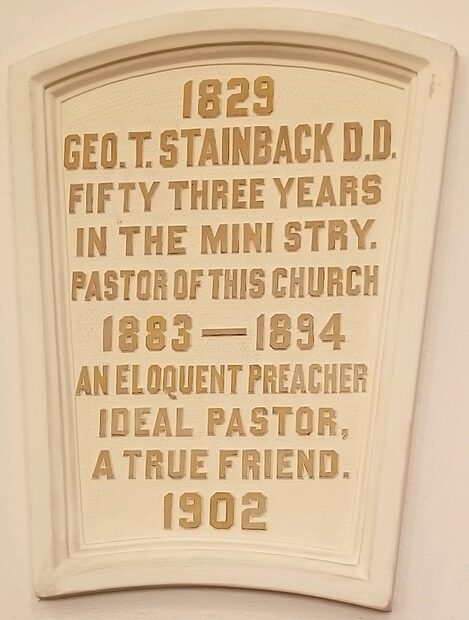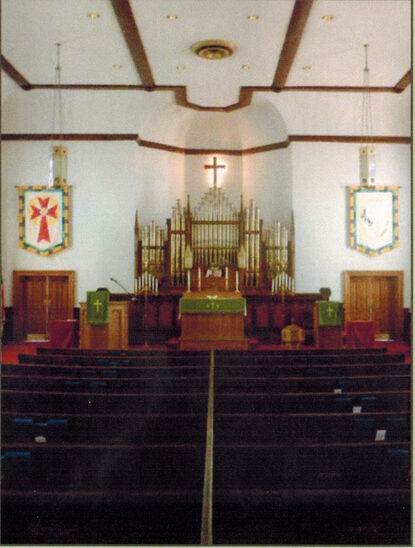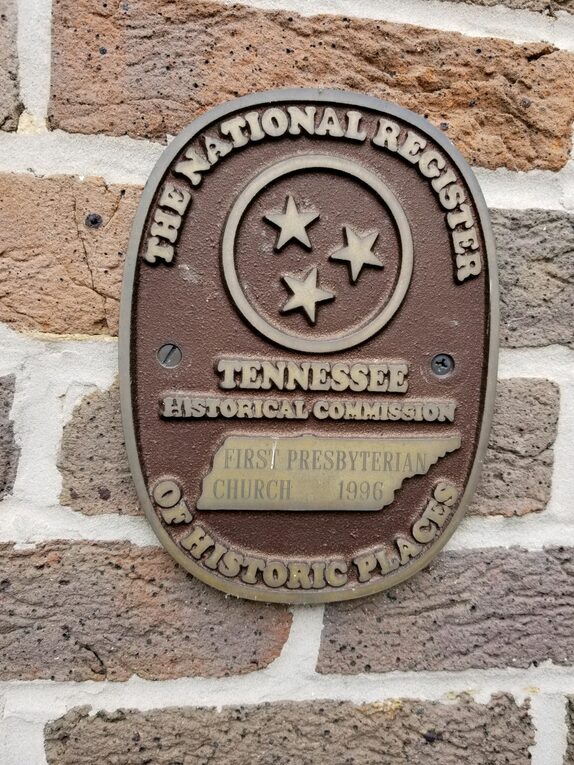Our Congregation's History
The predecessor of First Presbyterian was a Cumberland Presbyterian congregation organized in 1839. The first church was a large wood frame building located on the North side of West Main Street in the 300 block. The building survived the devastation and occupation of the Civil War but less than a year after the end of the war the church was destroyed by fire. Construction of the present church began in 1872 and was completed in 1878.
The Civil War was significant in the life of the church. After the Civil War George Stainback served as the minister from 1883-1894. During that time he was a tireless and dedicated campaigner. From the end of the war until Stainback's death in 1904, he was a tireless and dedicated campaigner for reconciliation between the North and South. He spoke at countless veterans reunions in the North and the South and on many occasions brought the two sides together for joint meetings. Some historians credit Stainback with accomplishing more for reconciliation than any other individual.
In 1906 the First Presbyterian congregation voted to leave the Cumberland Presbyterians and affiliate with the Presbyterian Church, USA. First Presbyterian became one of several congregations involved in litigation regarding property issues that were finally resolved by the Supreme Court in 1913 when the Court ruled in favor of the position espoused by Presbyterian Church, USA.
The women of First Presbyterian have always been vital to the health of the church; for example, the women have prepared and served the weekly luncheon for the Rotary Club of McMinnville since November 1922 and have applied the proceeds to the needs and missions of the church.

Music at First Presbyterian
The all volunteer chancel choir is featured at every Sunday service and the hand bell choir "rings the bells" on special occasions. The beautiful pipe organ was built by Henry Pilcher's Sons, Louisville Kentucky in 1897 and was installed in First Presbyterian in 1904. A few years ago the organ was one of ten church organs in the state chosen by the University of Tennessee music department to be recorded and included in a CD of church music.

